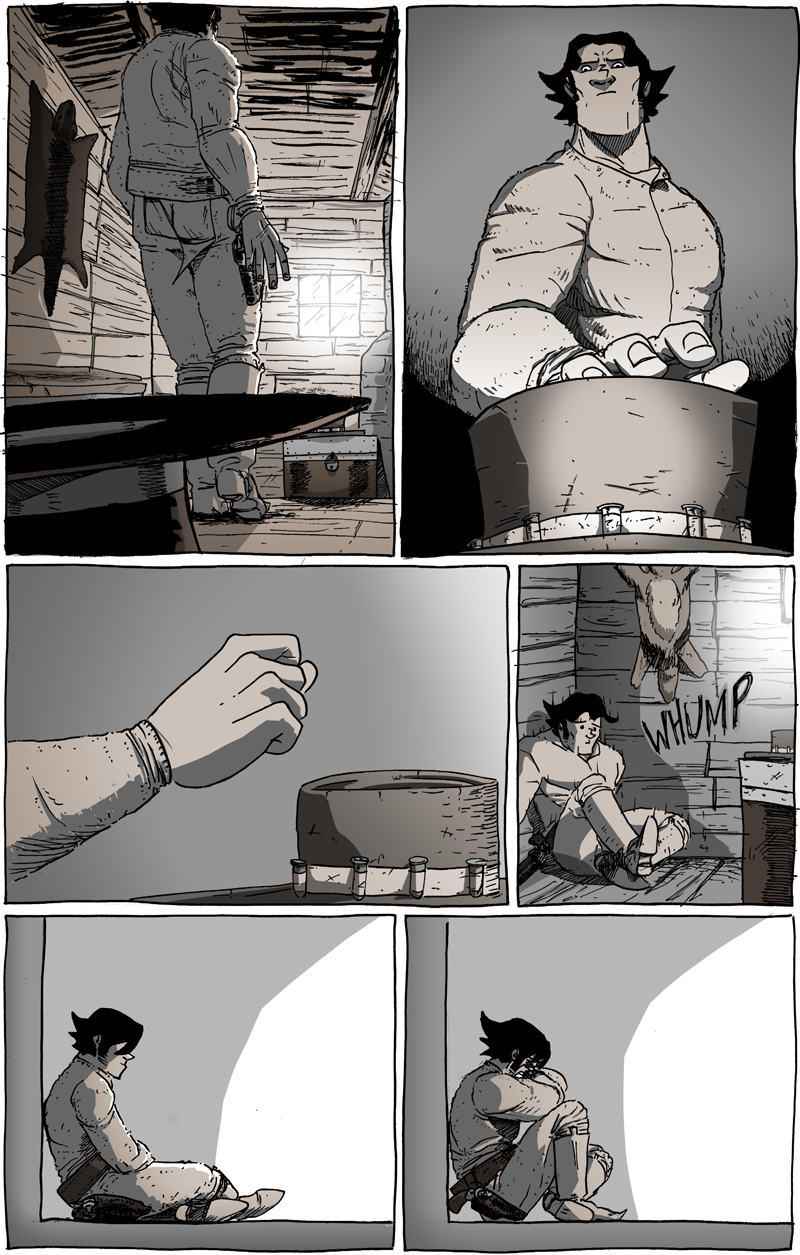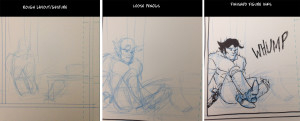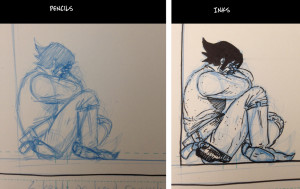Crossing the Threshold
This page is an example of a moment/image/scene that I’ve had in my head since the inception of Long John‘s story. Part of my own personal pitch to this comic––one that I, admittedly, kept very close to the chest––was that you’d see a cowboy cry. Those last two panels, in particular, summarize everything I have wanted to do with the comic since I started putting ink onto paper, and I’m quite satisfied with the final result.
This page is actually a comprehensive demonstration of my drawing techniques. Since I’m rather comfortable drawing Long John himself, I can actually be––what the industry calls it––looser with my pencils if it’s a fairly straight-ahead drawing such as in panel four where Long John is just falling down. I already had a general idea of the pose, the lighting, and the background so that I didn’t have to render very much before going in with a pen, thus making ideas permanent.
As you can see, the pencilling portion of this panel was quite gestural and detail-free. The biggest decisions revolved around the leg-placement and facial expression, both of which I could mostly work out in the inking stage. While this is not the most ground-breaking panel in the history of comics, it does show the limit of what I can get away with for my pencils. Since I’ve drawn Long John many times by this point, a simple falling image (again, I’ve drawn him falling to the ground many times by now) I could probably draw in my sleep.
Like I said, however, those last few panels guided me like narrative beacons as I charged forward through the story; even through chapter one where I had a lot of other things to focus on, this exact page was always hovering in my mind. Therefore, I wanted to make sure the emotion of this panel was spot on. So, though I always start with gestural placements of basic shapes, I ended up being much “tighter” on the pencils because I didn’t want to leave much up to chance in the inking stage. In other words, despite how spartan this panel is, it required a lot of focus, thought, and work.
Drawing comics is always a give and take, a constant pinging of one’s self-trust as one decides that a panel is as ready as it can be before moving on to the next stage of the process. As self-doubtful as this may seem, it ultimately rests on an artist’s trust in herself that––between pencilling and inking––enough information is there to work with in the stage that makes a drawing permanent and final.
What this leaves is some aspects of the story––albeit visual––to chance. However, it leaves space open for the important scenes and images to be nailed down as tightly as possible, so that they have the most impact I can muster with my talent and ability. With hope, this page hits hard––and will hit even harder for those in the future who read it either in print or barrel through the archives.





Discussion ¬